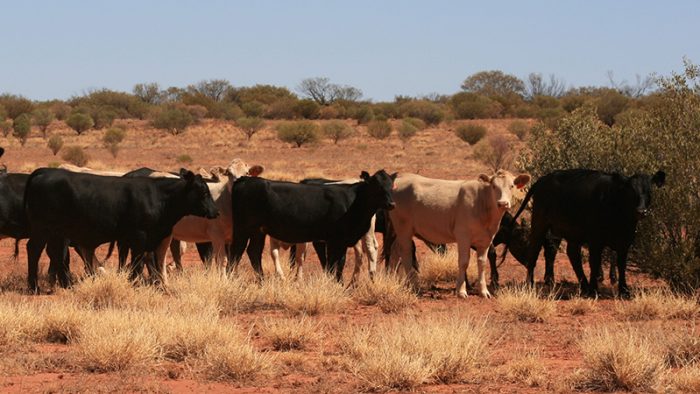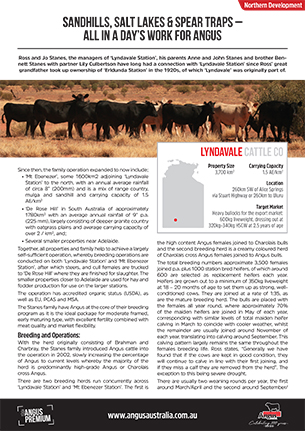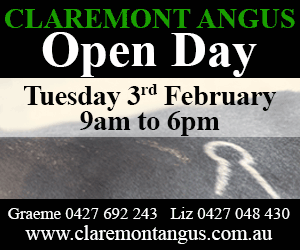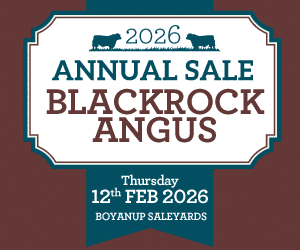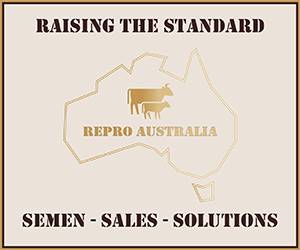Sandhills, Salt Lakes & Spear Traps – All in a day’s work for Angus
Ross and Jo Stanes, the managers of ‘Lyndavale Station’, his parents Anne and John Stanes and brother Bennett Stanes with partner Lily Culbertson have long had a connection with ‘Lyndavale Station’ since Ross’ great grandfather took up ownership of ‘Erldunda Station’ in the 1920s, of which ‘Lyndavale’ was originally part of.
Since then, the family operation expanded to now include;
- ‘Mt Ebenezer’, some 1600km2 adjoining ‘Lyndavale Station’ to the north, with an annual average rainfall of circa 8” (200mm) and is a mix of range country, mulga and sandhill and carrying capacity of 1.5 AE/km2
- ‘De Rose Hill’ in South Australia of approximately 1780km2 with an average annual rainfall of 9” p.a. (225 mm), largely consisting of deeper granite country with oatgrass plains and average carrying capacity of over 2 / km2, and;
- Several smaller properties near Adelaide.
Together, all properties and family help to achieve a largely self-sufficient operation, whereby breeding operations are conducted on both ‘Lyndavale Station’ and ‘Mt Ebenezer Station’, after which steers, and cull females are trucked to ‘De Rose Hill’ where they are finished for slaughter. The smaller properties closer to Adelaide are used for hay and fodder production for use on the larger stations.
The operation has accredited organic status (USDA), as well as EU, PCAS and MSA.
The Stanes family have Angus at the core of their breeding program as it is the ideal package for moderate framed, early maturing type, with excellent fertility combined with meat quality and market flexibility.
Breeding and Operations:
With the herd originally consisting of Brahman and Charbray, the Stanes family introduced Angus cattle into the operation in 2002, slowly increasing the percentage of Angus to current levels whereby the majority of the herd is predominantly high-grade Angus or Charolais cross Angus.
There are two breeding herds run concurrently across ‘Lyndavale Station’ and ‘Mt Ebenezer Station’. The first is the high content Angus females joined to Charolais bulls and the second breeding herd is a creamy coloured herd of Charolais cross Angus females joined to Angus bulls.
The total breeding numbers approximate 3,500 females joined p.a. plus 1000 station bred heifers, of which around 600 are selected as replacement heifers each year. Heifers are grown out to a minimum of 350kg liveweight at 18 – 20 months of age to set them up as strong, well-conditioned cows. They are joined at a rate of 1:35, as are the mature breeding herd. The bulls are placed with the females all year round, where approximately 70% of the maiden heifers are joined in May of each year, corresponding with similar levels of total maiden heifer calving in March to coincide with cooler weather, whilst the remainder are usually joined around November of each year, translating into calving around September. This calving pattern largely remains the same throughout the females breeding life. Ross states, “Generally we have found that if the cows are kept in good condition, they will continue to calve in line with their first joining, and if they miss a calf they are removed from the herd”. The exception to this being severe drought.
There are usually two weaning rounds per year, the first around March/April and the second around September/October of each year at around 6 – 7 months of age. Weaning entails all weaners being bought back to the main processing yards for about a week. During this time, all weaners are fed hay, whilst being worked with dogs. After this, all weaners are processed with steers taken to ‘Mt Ebenezer Station’ where they are grown out for 6 months before being trucked to ‘De Rose Station’, whilst the weaner heifers are taken to specific heifer paddocks at ‘Mt Ebenezer Station’ whilst the tops are kept at ‘Lyndavale Station’. Any heifers exhibiting an undesirable temperament are culled.
Weaners and breeders are provided with an organic Ridleys phosphorus and calcium supplement. Cull females are targeted foremost for poor temperament, type and age with most breeding females leaving the Northern Territory stations at approximately 8 years of age, taken to ‘De Rose Hill’ to calve out and raise their last weaner before exiting the system at approximately 10 years of age. Around 45% of the heifers are culled at weaning and the remainder after pregnancy testing. These weaner cull heifers, which are kept away from bulls, are fattened and turned off at around 2-2.5 years of age. These practices have the dual benefits of maintaining a fertile and efficient herd in the desert country whilst providing the aged breeders with improved access to nutrition whilst on their last calf.
Bulls:
Bulls are selected for functionality, temperament and other traits including fertility such as scrotal circumference and days to calving, traits resulting in the operations high weaning rates of high 80% level. Positive fats estimated breeding values (EBVs) also rank highly is Ross’s view to help maintain body condition in the desert conditions as well as their ability to finish for market specifications.
Also important is the requirement for bulls to have a short coat. This is to better cope with the extreme heat experienced over the summer months within the central Australian desert area. Just as important is for bulls to have lower milk and mature cow weight EBVs which translate into female progeny growing into breeders that are better adapted to reduced feed availability and energy requirements. The other main trait that is highly sought after in bulls is high eye muscle areas (EMA) to assist in progeny achieving good muscle pattern.
As bulls are often bought into the desert country from more temperate environments, they are largely introduced as 12 – 18 months of age and extended anywhere between 1 month (if excellent seasonal conditions) to 6 months acclimatisation period to optimise their ability to adapt to the harsher environment.
All purchased bulls have usually received their vaccinations, however the Stanes family always treat the new bulls with botulism vaccine.
The Results – Fertility:
The fertility of the Angus females is a positive in Ross’s view, reflecting on the female’s ability to cycle very soon after, saying that “After a drought breaks, we generally experience a bit of a spike in calving 11 – 12 months later, after allowing for feed growth and weight gain”. The weaning rate over the last 3 years have been well in excess of 80%. Ross Stanes attributes this to the careful selection and management of bulls and desired traits as well as careful breeder management including culling for age, nutrition (assisted through organic biofos) and particular care for weaner and maiden heifers. As Ross states, “A bit of extra effort in looking after the heifers from weaning to first calf pays for itself, as it sets them up for a long and productive life”.
The Results – Meeting Market Specs:
The Stanes family target premium markets through processors in both South Australia and Victoria. Bullocks are usually finished on pasture at ‘De Rose Hill’ until the target liveweight of ~ 600kg is reached at between 2- 2.5years of age. Dentition is usually between 2 – 4 teeth, HSCW at 320 – 340kg.
Angus Australia acknowledges the funds provided by the Australian Government through the Meat & Livestock Australia Donor Company (MDC).
This resource was created as a result of a collaboration between Angus Australia and Meat & Livestock Australia Donor Company (MDC) (Project P.PSH.1063).

